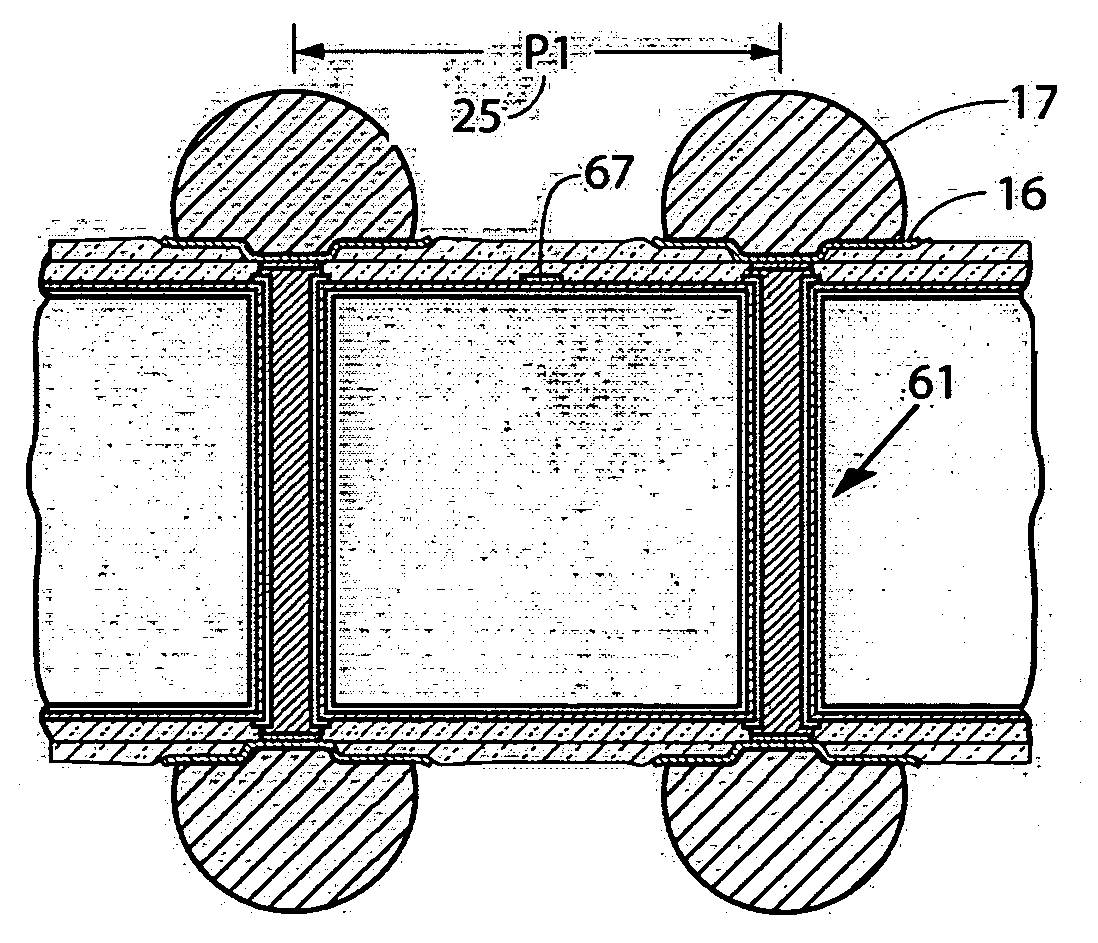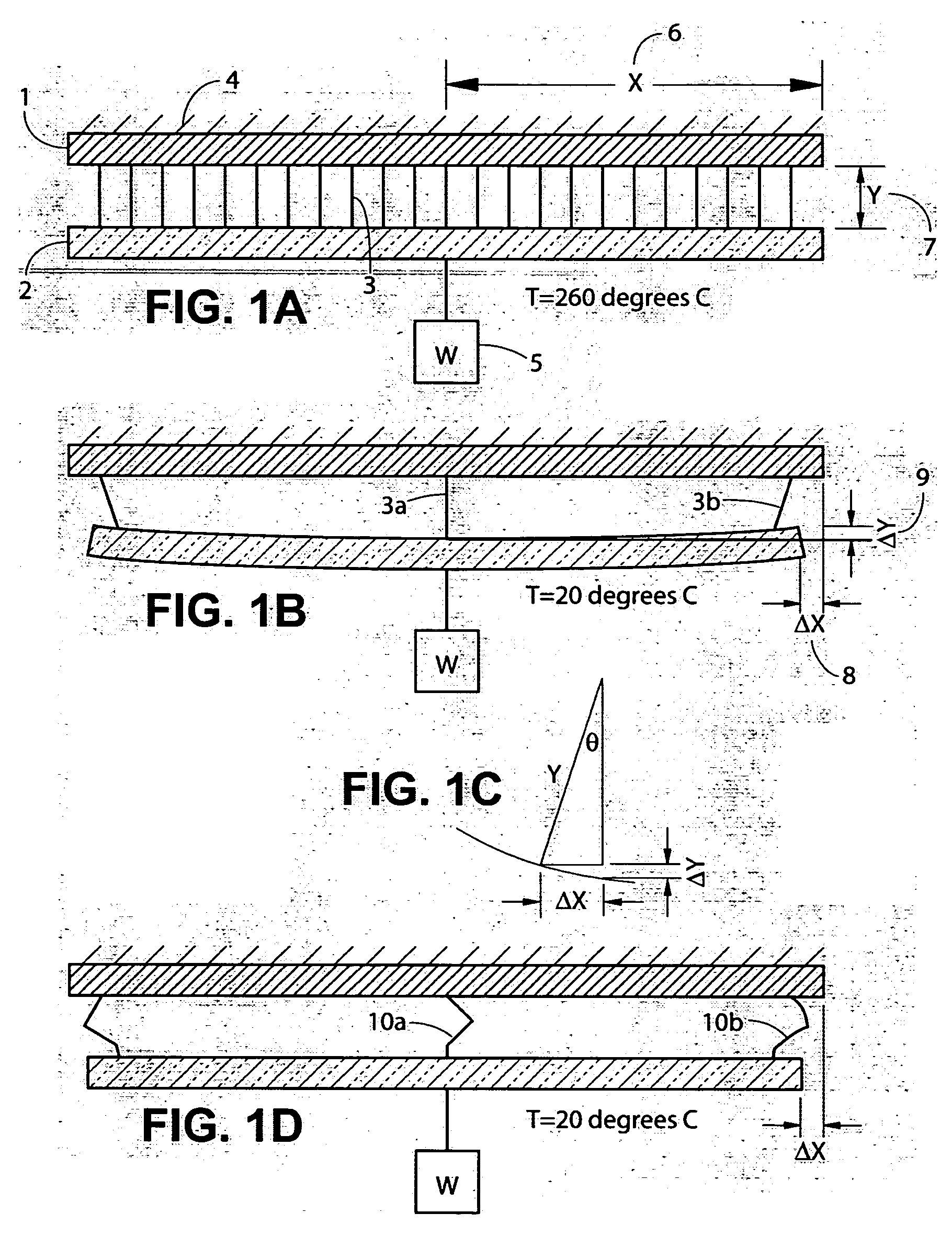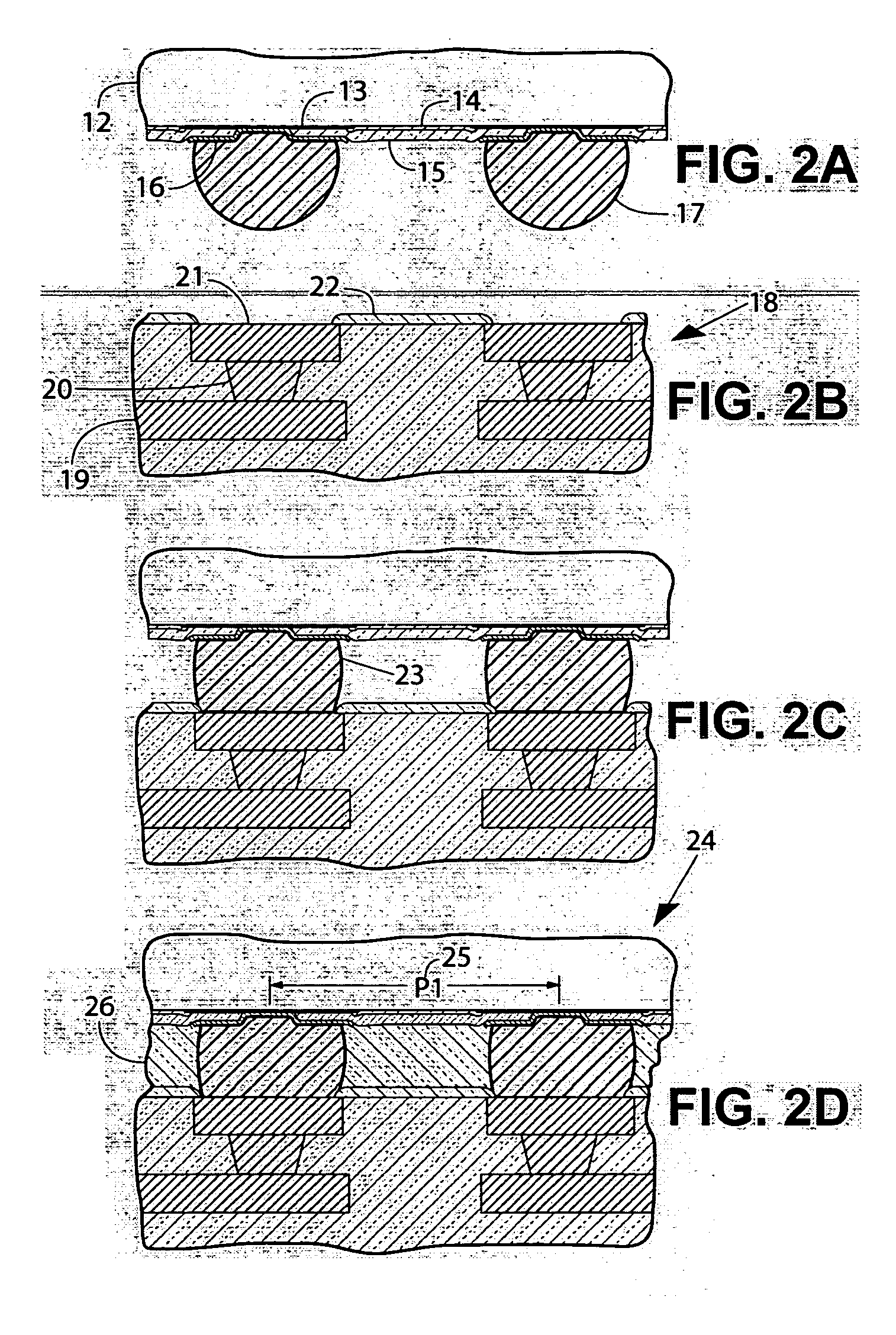Repairable three-dimensional semiconductor subsystem
a three-dimensional semiconductor and subsystem technology, applied in semiconductor devices, semiconductor/solid-state device details, electrical devices, etc., can solve the problems of buckling, cracking or delamination, shear force at the interface between the chip and the substrate, and non-compliant, and achieves low thermal impedance and superior thermal performance.
- Summary
- Abstract
- Description
- Claims
- Application Information
AI Technical Summary
Benefits of technology
Problems solved by technology
Method used
Image
Examples
embodiment 90
[0063]FIG. 7A illustrates a second preferred embodiment 90 of a repairable electronic subsystem of the current invention. In addition to the elements of subsystem 70 of FIG. 6A, subsystem 90 includes a heat sink 91 attached using interface adaptor 52. Attachment at interface 93 may be accomplished using a thin film of thermally conductive epoxy for example. Reactive foils may also be used to melt a sheet of solder at the interface, thereby bonding the parts together with low thermal impedance. Heat sink 91 may be an enclosure that also serves as a heat sink. Preferably heat sink or enclosure 91 provides strong mechanical support as well as heat extraction. Additional IC chips such as 92 are attached to the top side of integration platform 72b, which now includes through wafer connections like 61 of FIGS. 5A and 5B, in order to connect between semiconductor elements on its top and bottom sides.
embodiment 95
[0064]FIG. 7B illustrates a third preferred embodiment 95 of a repairable electronic subsystem of the present invention. Subsystem 95 includes another semiconductor integration platform 72c, connected using I / O plugs 60b to platform 72b of FIG. 7A. This provides mechanical and electrical support for another layer of IC chips such as 96 to be attached to the under side of platform 72c.
embodiment 100
[0065]FIG. 7C illustrates a fourth preferred embodiment 100 of a repairable electronic subsystem of the present invention. Subsystem 100 includes semiconductor integration platforms 71, 72b, and 72c each having attached semiconductor elements as shown. Unlike most electronic subsystems employing stacked semiconductor elements, complexity is not limited by yield issues but rather by thermal considerations. Accordingly, subsystem 100 includes interface adaptors at both top and bottom, 52b and 52, attached to heat sinks 101 and 91 as shown. This arrangement provides a thermal and electrical architecture that may support supercomputers of the future, including sets of parallel planes of heat sinks such as 101 and 91, with dense assemblies of semiconductor elements sandwiched in between as shown, connected using cables such as 76.
[0066]FIG. 8 is a schematic view of a semiconductor integration platform 110 of the current invention. Integration platform 110 incorporates examples of all of ...
PUM
 Login to View More
Login to View More Abstract
Description
Claims
Application Information
 Login to View More
Login to View More - R&D
- Intellectual Property
- Life Sciences
- Materials
- Tech Scout
- Unparalleled Data Quality
- Higher Quality Content
- 60% Fewer Hallucinations
Browse by: Latest US Patents, China's latest patents, Technical Efficacy Thesaurus, Application Domain, Technology Topic, Popular Technical Reports.
© 2025 PatSnap. All rights reserved.Legal|Privacy policy|Modern Slavery Act Transparency Statement|Sitemap|About US| Contact US: help@patsnap.com



